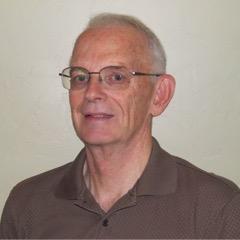2015 Hagan-Smit Prize Winner
The Executive Editors and the Publisher of Atmospheric Environment take great pleasure in announcing the 2015 ‘‘Haagen-Smit Prize”, designed to recognize outstanding papers published in Atmospheric Environment. The Prize is named in honor of Prof. Arie Jan Haagen-Smit, a pioneer in the field of air pollution and one of the first editors of the International Journal of Air Pollution, a predecessor to Atmospheric Environment.
The ‘‘Haagen-Smit Prize’’ is given annually to a maximum of two papers previously published in Atmospheric Environment and covering different science areas. Additional information about this award and the selection committee members can be found in http://geo.arc.nasa.gov/sgg/singh/. The nominating letters printed below describe the 2015 winning paper.

Chan, C. K. and X. Yao, Air pollution in mega cities in China. Atmospheric Environment, 42, 1-42 (2008).
I would like to nominate the paper, “Chan, C.K. and X. Yao. Air pollution in mega cities in China. AE 42:1-42, 2008,” for the Haagen-Smit prize for 2015. Air quality in China is some of the worst in the world, affecting the health and well-being of millions. It is estimated that over 1 million people die from breathing poor air quality in China each year. One result of this disaster is a huge increase in the number of research studies and papers on the types, sources and dynamics of air quality in Chinese cities. The Chinese government has recognized the severity of this problem and is starting to take steps to reduce emission. The severity of the air quality problem in China has gained the attention of Chinese national and international scientists fostering the need for a review of the literature to help future scientists begin their investigations. This review article summarizes the knowledge to date on air quality in China’s megacities so provides a solid foundation about gas and particulate pollutants thereby supporting necessary future studies and emissions regulations. The result is that in its relatively short lifetime, it has garnered 615 citations averaging 88 citations per year. In summary, air quality in China’s major cities is some of the worst in the world affecting the lives of millions of people – this paper deserves the Haagen-Smit prize because it summarizes the state of knowledge at the time fostering future studies and improved regulations. I strongly recommend that the Haagen-Smit Prize be awarded to this pioneering paper.
Nominator: Anthony Wexler, UC Davis, USA.

 Prof. Tracy Thatcher, Civil and Environmental Engineering, Cal Poly, San Luis Obispo, CA93407, USA (tthatche@calpoly.edu); Dr. David W. Layton, 5468 N Sabino Highlands Pl, Tucson, AZ 85749, USA (dwlayton@comcast.net)
Prof. Tracy Thatcher, Civil and Environmental Engineering, Cal Poly, San Luis Obispo, CA93407, USA (tthatche@calpoly.edu); Dr. David W. Layton, 5468 N Sabino Highlands Pl, Tucson, AZ 85749, USA (dwlayton@comcast.net)
Thatcher, T. L. and D. W. Layton, Deposition, Resuspension and Penetration of Particles within a Residence, Atmospheric Environment, 29, 1487-1497 (1995).
It has long been recognised in the air quality research community that although air quality monitoring is typically conducted in the outdoor environment, the main contribution to human exposure occurs indoors. Consequently, study of the processes determining indoor concentrations is very important. Despite this, the scientific study of indoor air lagged behind that of outdoor air for many years, and still does in some aspects due to a lack of investment in research. Prior to the publication of Thatcher and Layton’s seminal paper, most research on airborne particles in the indoor atmosphere had done little more than measure indoor/outdoor ratios, with some studies of chemical composition of indoor particles. The Thatcher and Layton paper brought about a step change in such research by combining measurement data, including size-resolved particle measurements, with a detailed analysis of processes, which led to a far more quantitative understanding of the factors which determine indoor concentrations. Thus the work considered penetration through the building envelope, which had been widely assumed to be a protective process, finding that penetration efficiencies for supermicron particles are close to 100%. Deposition processes were quantified, showing that gravitational settling was the main deposition mechanism for particles in the supermicron size range. Resuspension caused by human activity was also quantified and shown to be a process with the potential for major impact upon indoor concentrations. The advances in methodology and conceptual understanding in this paper have led many workers to adopt similar approaches and as a result overall citations are high (384) and continue strongly twenty years after publication. We strongly feel that this outstanding work is highly deserving of the Haagen-Smit Prize.
Nominated by: Roy M. Harrison, University of Birmingham, U.K.; Lidia Morawska, Queensland University of Technology, Australia
Our congratulations go to the authors of the outstanding paper selected for the 2015 Prize. We would also very much like to thank all the nominators for their effort and note that unsuccessful nominations are eligible for consideration again next year. We further take this opportunity to acknowledge the consciences effort of the selection committee, made up of members from six countries, in arriving at a clear and timely decision.
H. B. Singh, C. Chan, A. Wiedensohler
Editors-in-Chief, Atmospheric Environment
D. Hopwood
Executive Publisher, Elsevier
